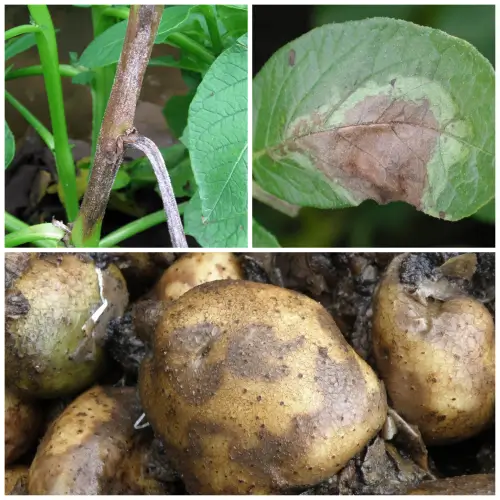Understanding Potato Late Blight: Causes, Symptoms, and Management
Publish Date: 2024-12-29
Potato late blight is a devastating disease that significantly impacts potato production worldwide. Caused by the pathogen Phytophthora infestans, this disease was responsible for the infamous Irish Potato Famine in the 19th century and continues to pose challenges for farmers today. This article delves into the causes, symptoms, and effective management strategies for late blight in potatoes.

What is Late Blight?
Late blight is a fungal-like disease caused by the oomycete pathogen Phytophthora infestans. While it primarily affects potatoes, it can also infect tomatoes and other members of the Solanaceae family. The disease thrives in cool, wet, and humid conditions, making it a significant concern in regions with such climates.
Causes of Late Blight
The primary cause of late blight is the rapid spread of P. infestans spores through various means:
- Airborne Spores: The pathogen releases sporangia that can travel long distances with the wind.
- Infected Seed Tubers: Planting infected tubers can introduce the disease into a field.
- Contaminated Soil and Debris: The pathogen can survive in infected plant residues, serving as a source of infection in subsequent seasons.
- Favorable Conditions: Cool temperatures (10–25°C) and prolonged leaf wetness from dew, rain, or irrigation create ideal conditions for the pathogen to thrive.
Symptoms of Late Blight
Recognizing the symptoms of late blight is crucial for early intervention. The disease can affect both the foliage and tubers of potato plants:
Foliage Symptoms
- Small, water-soaked lesions appear on the leaves, often at the edges.
- These lesions rapidly enlarge and turn brown or black, often surrounded by a yellow halo.
- In humid conditions, white fungal growth (sporulation) may be visible on the undersides of leaves.
- Stems may develop dark brown or black streaks.
Tuber Symptoms
- Tubers exhibit firm, brown, or purplish lesions on the surface.
- The internal flesh beneath the lesions shows a reddish-brown discoloration.
- Infected tubers are prone to secondary bacterial infections, causing soft rot and foul odors.
The Disease Cycle
Late blight follows a cyclical pattern that facilitates its rapid spread:
- Inoculation: Spores land on susceptible plants or soil.
- Germination: Under favorable conditions, spores germinate and infect the plant tissue.
- Infection: The pathogen colonizes the plant, causing visible symptoms.
- Sporulation: New spores form on infected tissues, ready to infect other plants.
This cycle can repeat multiple times during a growing season, leading to widespread damage.
Management Strategies for Late Blight
Effective management of late blight requires an integrated approach combining cultural, chemical, and genetic measures.
1. Cultural Practices
- Crop Rotation: Avoid planting potatoes or tomatoes in the same field for consecutive years to reduce pathogen survival.
- Remove Infected Debris: Destroy infected plant residues after harvest to prevent overwintering.
- Ensure Proper Spacing: Maintain adequate spacing between plants to improve air circulation and reduce humidity.
- Irrigation Management: Water plants early in the day to allow foliage to dry quickly.
2. Use of Resistant Varieties
Planting late-blight-resistant potato cultivars can significantly reduce disease impact. Some resistant varieties include 'Sarpo Mira' and 'Cara.'
3. Chemical Control
- Apply fungicides as a preventive measure, especially during periods of high risk.
- Commonly used fungicides include chlorothalonil, mancozeb, and systemic options like metalaxyl or fluopicolide.
- Always follow local guidelines for fungicide application to avoid resistance development.
4. Monitoring and Early Detection
- Regularly scout fields for early signs of infection.
- Use disease forecasting tools that predict late blight outbreaks based on weather conditions.
Economic and Environmental Impacts
Late blight can cause significant economic losses due to reduced yields and the need for repeated fungicide applications. Additionally, heavy reliance on chemical control poses environmental risks, such as water contamination and harm to beneficial organisms. Adopting sustainable management practices is crucial to balance productivity and environmental health.
Conclusion
Potato late blight remains one of the most challenging diseases for farmers. However, with a combination of cultural practices, resistant varieties, and timely fungicide applications, it is possible to mitigate its impact. By staying vigilant and adopting sustainable farming techniques, growers can protect their crops and ensure a steady food supply.
References:
This article is based on general agricultural knowledge and original research. Always consult local agricultural extension services for region-specific guidance.